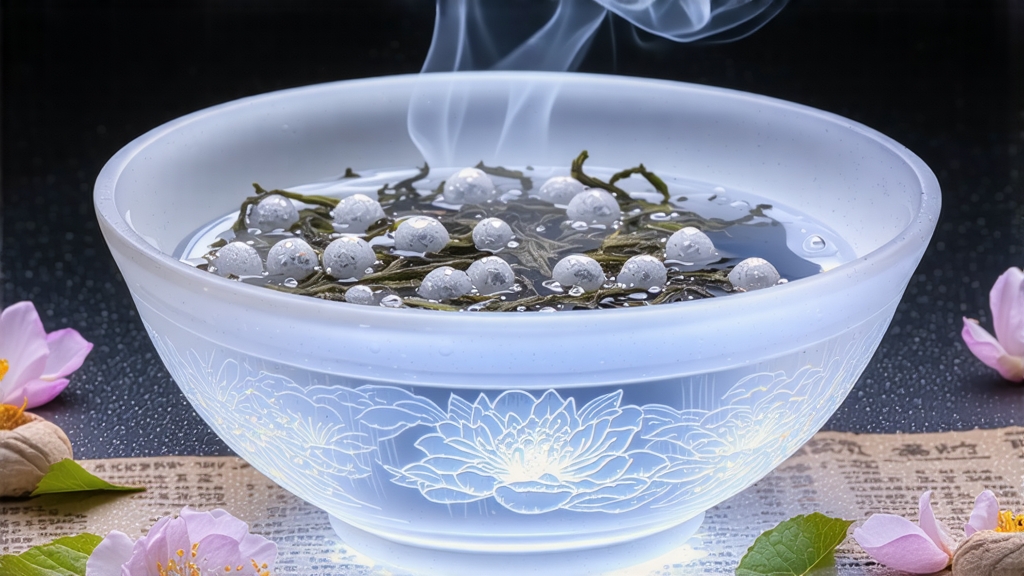
White tea is the least disturbed of all China’s six major tea families, and within that quiet realm Bai Hao Yin Zhen—translated globally as “White-Hair Silver Needle”—stands as the purest expression of leaf, air, and time. International drinkers often meet white tea through bagged blends, yet the original Silver Needle remains a niche treasure: a tea that carries the cool scent of March mountains, the shimmer of moonlight on a bamboo tray, and a history older than the word “tea” itself.
Historical whispers
Fujian province’s coastal mountains have produced “small-white” tea trees for at least nine centuries, but Silver Needle’s documented fame begins in the 1790s, when the Qianlong Emperor’s court received tribute cakes pressed from down-covered buds. Export records from the port of Fuzhou show that by 1857 the buds were being shipped in loose form to Southeast Asia, prized by Chinese diaspora doctors as a “cooling” beverage against tropical heat. European merchants initially confused the fluffy needles with willow-catkin, labeling them “white down” in ledgers; only after 1890 did London auctioneers coin the romantic name “Silver Needle.” The tea survived the collapse of imperial tribute systems, the wars of the twentieth century, and the mass-market turn toward scented whites, quietly maintaining its identity as the apex of minimally processed camellia sinensis.
The trees that make the buds
Authentic Silver Needle is plucked from two specific cultivars: Fuding Da Bai Hao and Zhenghe Da Bai. Both are “big-white” strains whose spring buds can reach 3.5 cm, each cloaked in a protective layer of cellulose hairs that reflect light like frost. The Fuding strain gives a sweeter, lilac-toned liquor, while Zhenghe yields a deeper, hay-like aroma; connoisseurs treat them as parallel violins in the same chamber orchestra. Gardens sit between 200–800 m elevation, where morning fog slows photosynthesis, concentrating amino acids and creating the tea’s signature umami sweetness.
Plucking etiquette
The harvest window opens for only ten days each early spring, beginning when the bud stands erect but the first leaf remains folded beneath it. Pickers work before 9 a.m., while dew still glistens, using a gentle twist that keeps the bud intact. A skilled woman can gather 2,000 buds per hour; 30,000 buds—an entire day’s labor for three people—yield just 500 g of finished tea. No gloves are worn, because the slightest abrasion can bruise the surface hairs, turning them from silvery-white to dull grey.
The craft of “letting it be”
Silver Needle’s processing is famously non-invasive: only two steps, withering and drying, never rolling or frying. Buds are spread on bamboo trays 1 cm thick, then wheeled into a sun-room whose walls are woven from reeds; here they rest for 36–48 hours, losing moisture while enzymes quietly oxidize the edges of each hair. The withering is paused at dusk, when trays are stacked to trap heat, then resumed at dawn. Finally the buds pass through a charcoal-warm chamber at 40 °C for twenty minutes, just enough to fix the moisture at 5 %. The result is a tea that is technically neither green nor fully oxidized—it occupies a liminal category that Chinese technicians call “slightly fermented,” around 5–10 % oxidation.
Terroir variations
Although both Fuding and Zhenghe counties share Fujian’s subtropical climate, micro-differences create distinct styles. Fuding’s coastal breezes lend a marine salinity, whereas Zhenghe’s inland valleys provide cooler nights, encouraging a slower wither and a darker, brass-colored infusion. A third, lesser-known origin is Jianyang, where higher altitude and pine forests add a resinous top note reminiscent of frankincense. Purists insist that only buds from these three counties deserve the name Silver Needle; elsewhere the same cultivar produces “imitation needle” lacking the density of down.
Grading & age-worthiness
Unlike green tea, which fades within a year, Silver Needle improves for at least a decade if stored cool, dry, and away from odors. With time the hairs oxidize to champagne gold, while the flavor migrates from fresh honeydew toward dried apricot, camphor, and a faint cocoa finish